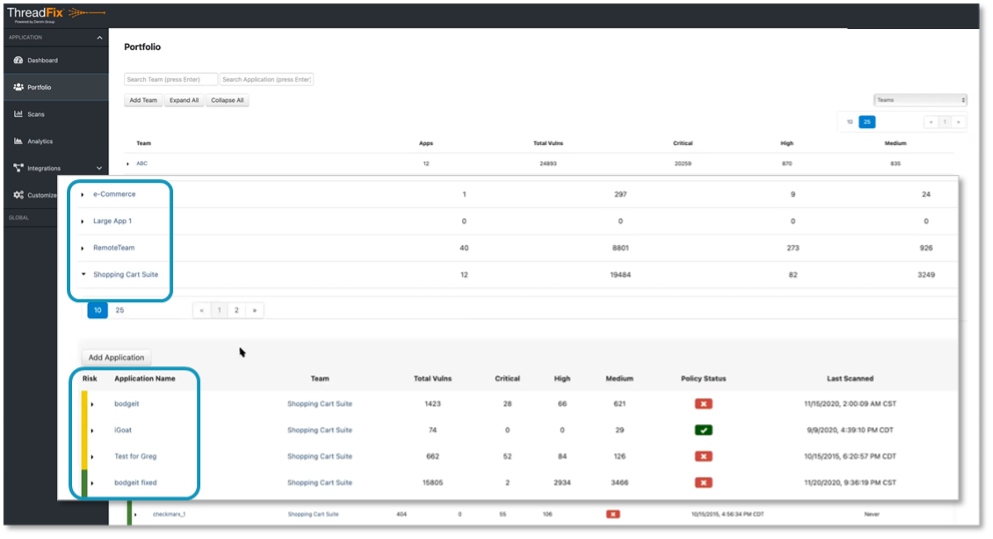
Brought to you by:
Enterprise Strategy Group | Getting to the Bigger Truth™
ESG TECHNICAL VALIDATION
Identify and Remediate Application Vulnerabilities with Coalfire ThreadFix
A DevSecOps Automation Platform for Risk Reduction
By Tony Palmer, Senior Validation Analyst
FEBRUARY 2022
Introduction
Background
Figure 1. The Reality of the Diverse Range of Cloud-native Cybersecurity Incidents
Which of the following cybersecurity incidents, if any, has your organization experienced in the last 12 months related specifically to cloud-native applications and infrastructure? (Percent of respondents, N=383, multiple responses accepted)
Source: Enterprise Strategy Group
The ThreadFix Platform
Figure 2. Veritas InfoScale and Hitachi Vantara Storage

ESG Technical Validation
Vulnerabilities
ESG Testing
Figure 3. The Coalfire ThreadFix Dashboard

Figure 4. Vulnerable Software Components

Figure 5. The ThreadFix Portfolio

Why This Matters
Application Details
Figure 6. The ThreadFix Portfolio-Application Detail

Figure 7. The ThreadFix Portfolio-Application Detail

Why This Matters
Scanner and Defect Tracker Integration
ESG Testing
Figure 8. ThreadFix Scanner Integration

Figure 9. Mapping Projects to Applications

Figure 10. ThreadFix Defect Tracker Integration

Why This Matters
The Bigger Truth
This ESG Economic Validation was commissioned by Zscaler and is distributed under license from ESG.
All trademark names are property of their respective companies. Information contained in this publication has been obtained by sources The Enterprise Strategy Group (ESG) considers to be reliable but is not warranted by ESG. This publication may contain opinions of ESG, which are subject to change from time to time. This publication is copyrighted by The Enterprise Strategy Group, Inc. Any reproduction or redistribution of this publication, in whole or in part, whether in hard-copy format, electronically, or otherwise to persons not authorized to receive it, without the express consent of The Enterprise Strategy Group, Inc., is in violation of U.S. copyright law and will be subject to an action for civil damages and, if applicable, criminal prosecution. Should you have any questions, please contact ESG Client Relations at 508.482.0188.

Enterprise Strategy Group | Getting to the Bigger Truth™
Enterprise Strategy Group is an IT analyst, research, validation, and strategy firm that provides market intelligence and actionable insight to the global IT community.
